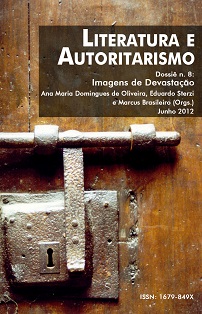Presentation - Dossier "Images of Devastation"
DOI:
https://doi.org/10.5902/1679849X75242Keywords:
Images, DevastationAbstract
There are many reasons why our time is seen as a time of devastation: let us think more broadly about the ecological catastrophe of global warming, which is already beginning to change the landscape around the planet and to produce more and more refugees in the environment, but also locally in accidents such as Fukushima (which reprises Three Miles Island and Chernobyl on a larger scale) or, in the case of Brazil, the progressive (and “progressive-thinking”) destruction of the Amazon, whether to transform the forest into soy and pasture, or to convert its rivers into reservoirs of hydroelectric plants. In the episode of Hurricane Katrina, in the United States, the link between this global devastation and new forms of authoritarianism became clear - which has also been verified, with its own modalities, in the construction of the hydroelectric plants of Belo Monte, Jirau and Santo Antônio, in Brazil.
Downloads
References
CUNHA, Euclides da. Os sertões. 1902.
CUNHA, Euclides da. À margem da história. 1909.
ELIOT, T. S. The Waste Land. 1922.
MARCUS, Greil; SOLLORS, Werner. O Furacão Katrina: Nova Orleans perdida na enchente. Trad. Idelber Avelar. In: A New Literary History of America. Harvard University Press, 2009.
Downloads
Published
How to Cite
Issue
Section
License
DECLARAÇÃO DE ORIGINALIDADE E EXCLUSIVIDADE E CESSÃO DE DIREITOS AUTORAIS
Declaro que o presente artigo é original e não foi submetido à publicação em qualquer outro periódico nacional ou internacional, quer seja em parte ou na íntegra. Declaro, ainda, que após publicado pela Literatura e Autoritarismo, ele jamais será submetido a outro periódico. Também tenho ciência que a submissão dos originais à Literatura e Autoritarismo implica transferência dos direitos autorais da publicação digital. A não observância desse compromisso submeterá o infrator a sanções e penas previstas na Lei de Proteção de Direitos Autorais (nº 9610, de 19/02/98).






